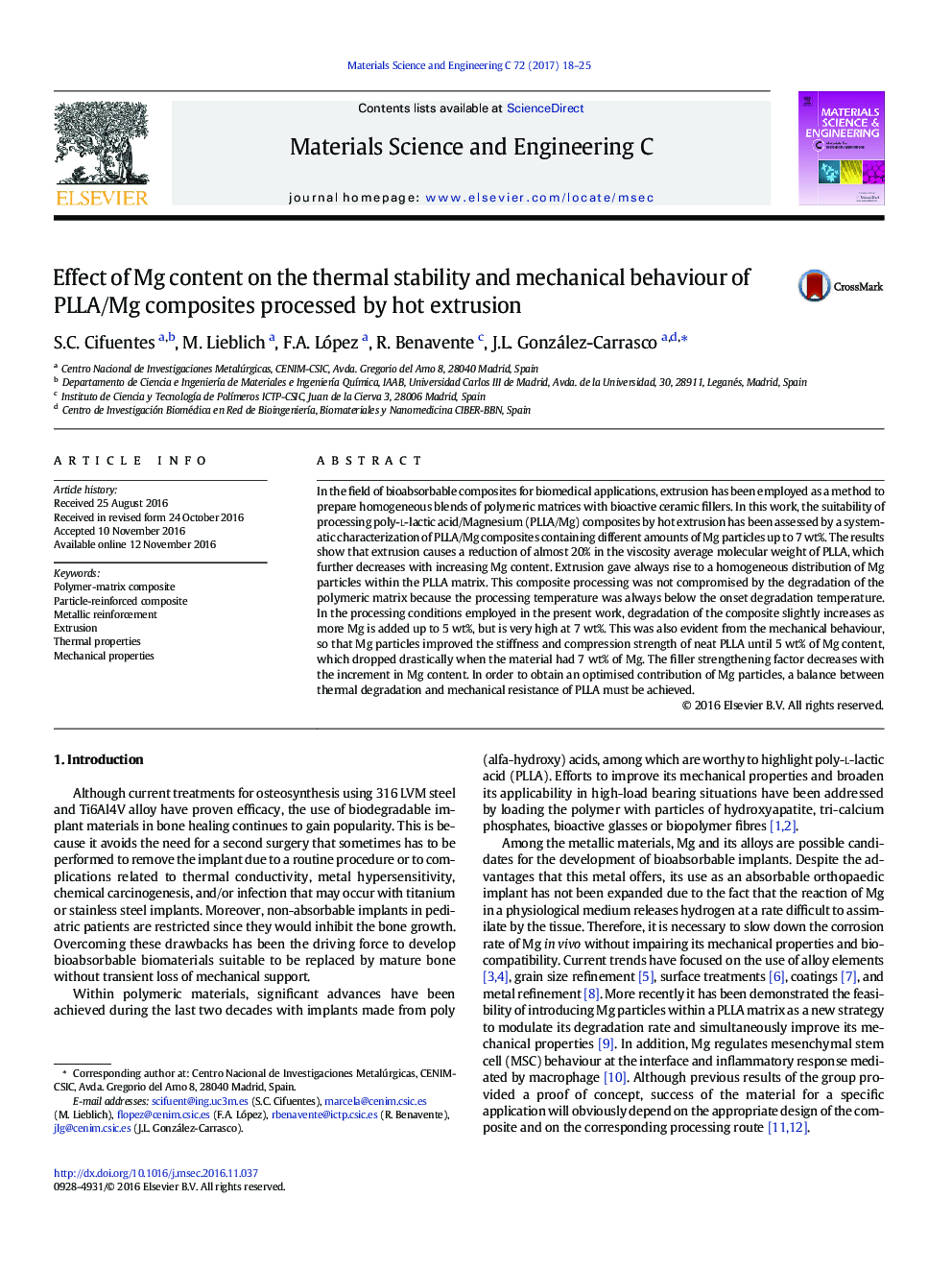| Article ID | Journal | Published Year | Pages | File Type |
|---|---|---|---|---|
| 5435175 | Materials Science and Engineering: C | 2017 | 8 Pages |
â¢PLLA/Mg composites can be fabricated by thermoplastic processes.â¢Mg particles increase PLLA stiffness (20% for 5 wt%) but accelerate its degradation.â¢A balance between thermal degradation and mechanical resistance must be achieved.â¢Due to degradation, filler strengthening factor diminishes with Mg content.
In the field of bioabsorbable composites for biomedical applications, extrusion has been employed as a method to prepare homogeneous blends of polymeric matrices with bioactive ceramic fillers. In this work, the suitability of processing poly-l-lactic acid/Magnesium (PLLA/Mg) composites by hot extrusion has been assessed by a systematic characterization of PLLA/Mg composites containing different amounts of Mg particles up to 7Â wt%. The results show that extrusion causes a reduction of almost 20% in the viscosity average molecular weight of PLLA, which further decreases with increasing Mg content. Extrusion gave always rise to a homogeneous distribution of Mg particles within the PLLA matrix. This composite processing was not compromised by the degradation of the polymeric matrix because the processing temperature was always below the onset degradation temperature. In the processing conditions employed in the present work, degradation of the composite slightly increases as more Mg is added up to 5Â wt%, but is very high at 7Â wt%. This was also evident from the mechanical behaviour, so that Mg particles improved the stiffness and compression strength of neat PLLA until 5Â wt% of Mg content, which dropped drastically when the material had 7Â wt% of Mg. The filler strengthening factor decreases with the increment in Mg content. In order to obtain an optimised contribution of Mg particles, a balance between thermal degradation and mechanical resistance of PLLA must be achieved.
Graphical abstractDownload high-res image (183KB)Download full-size image
